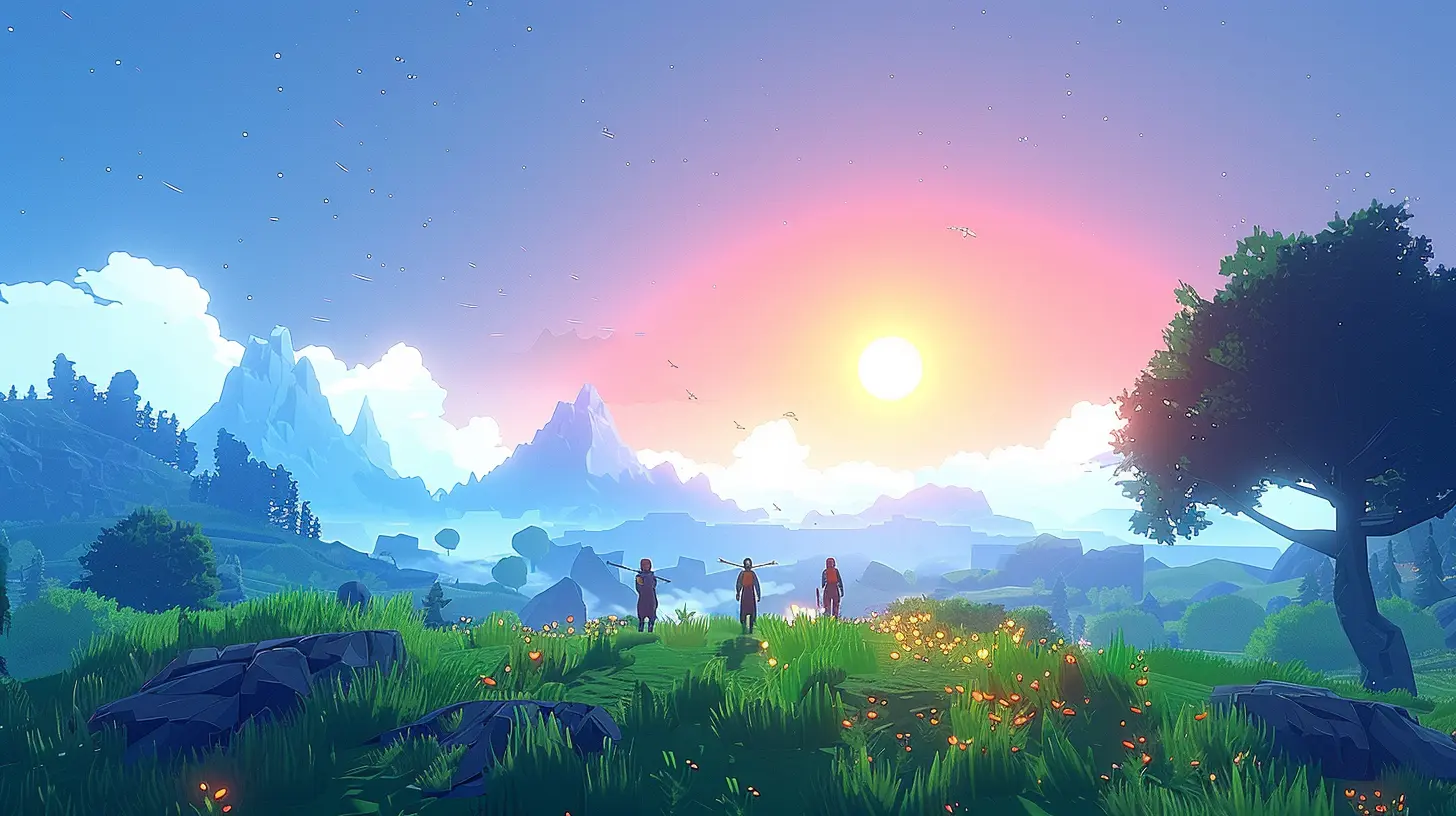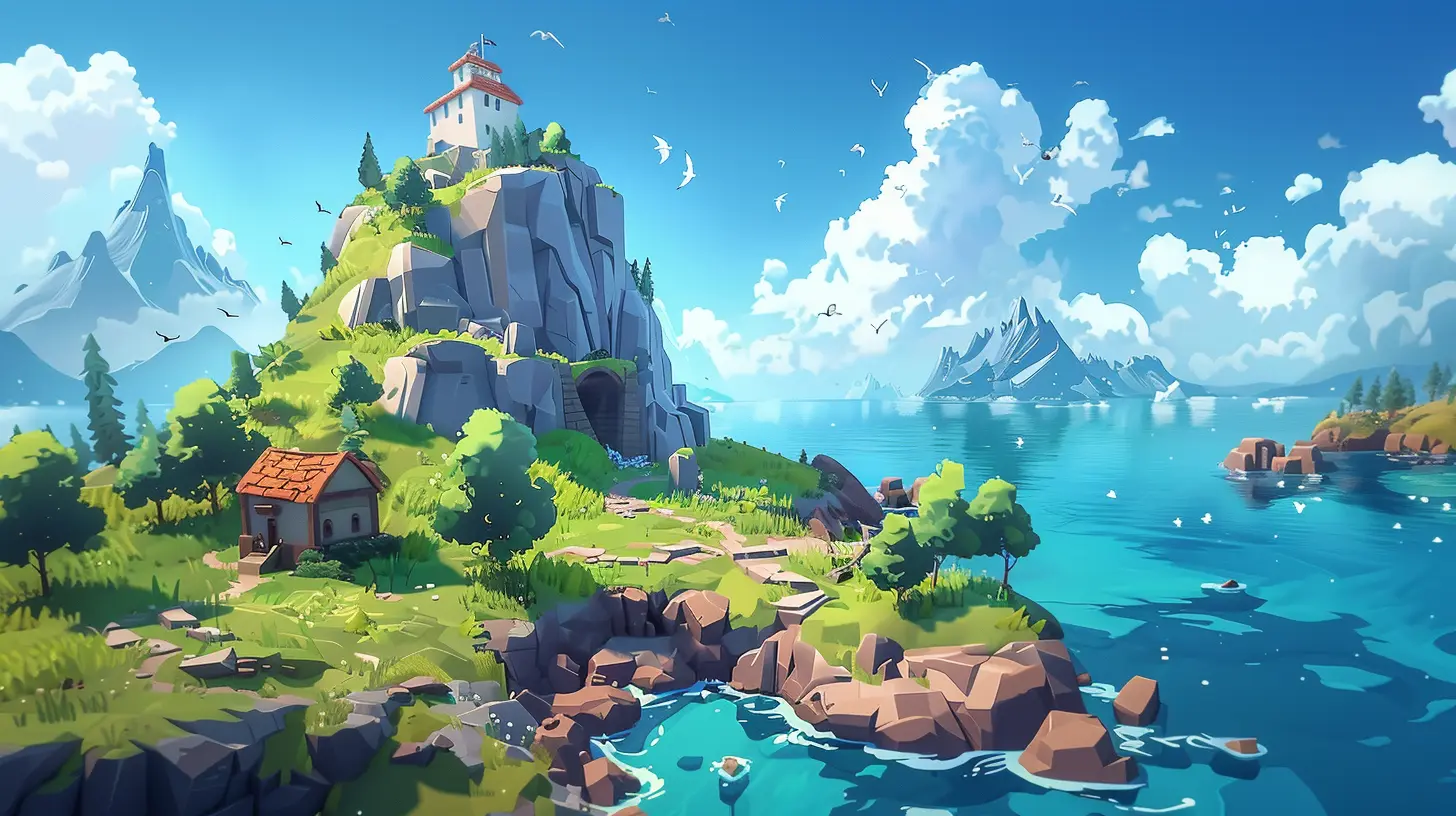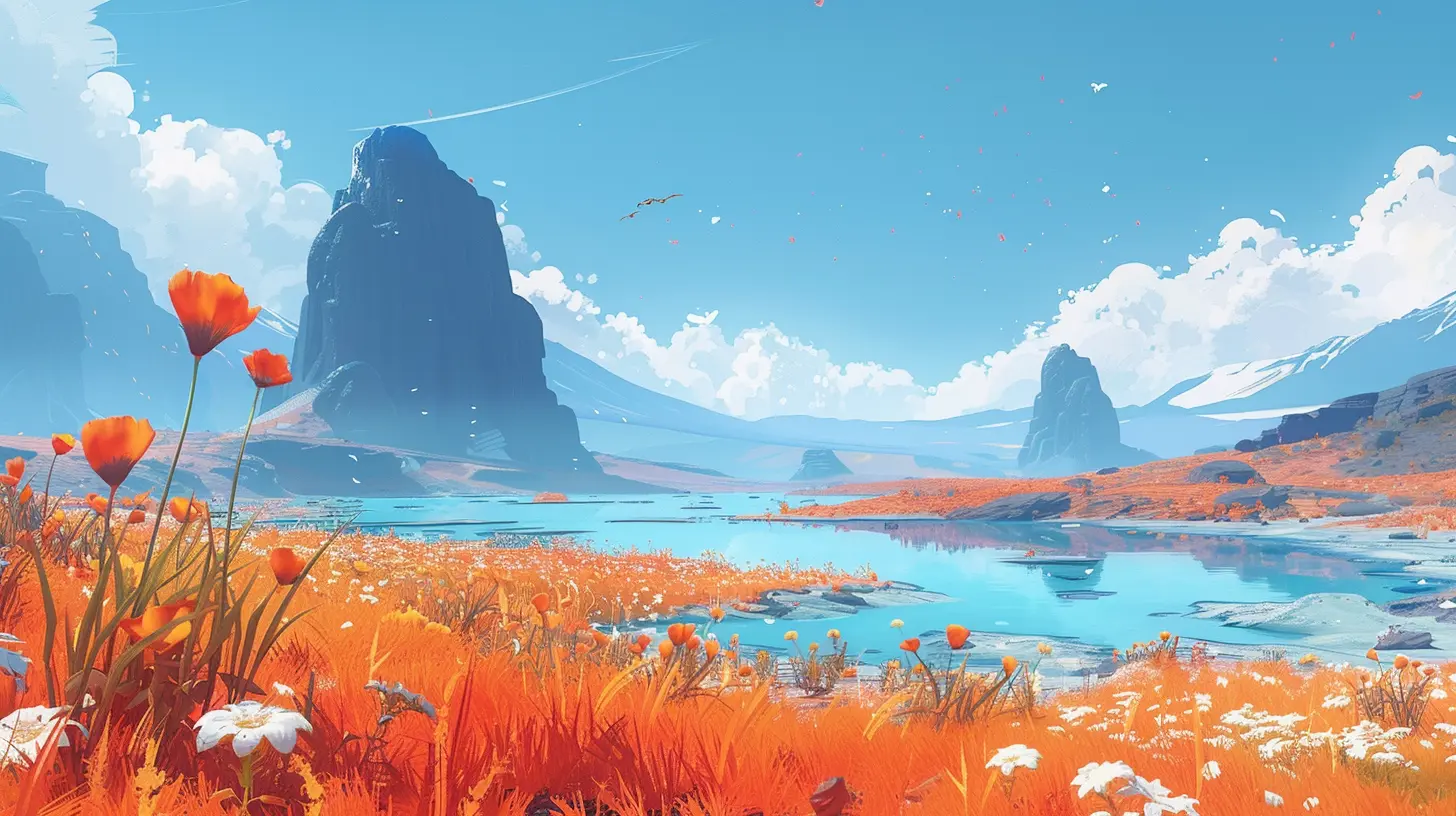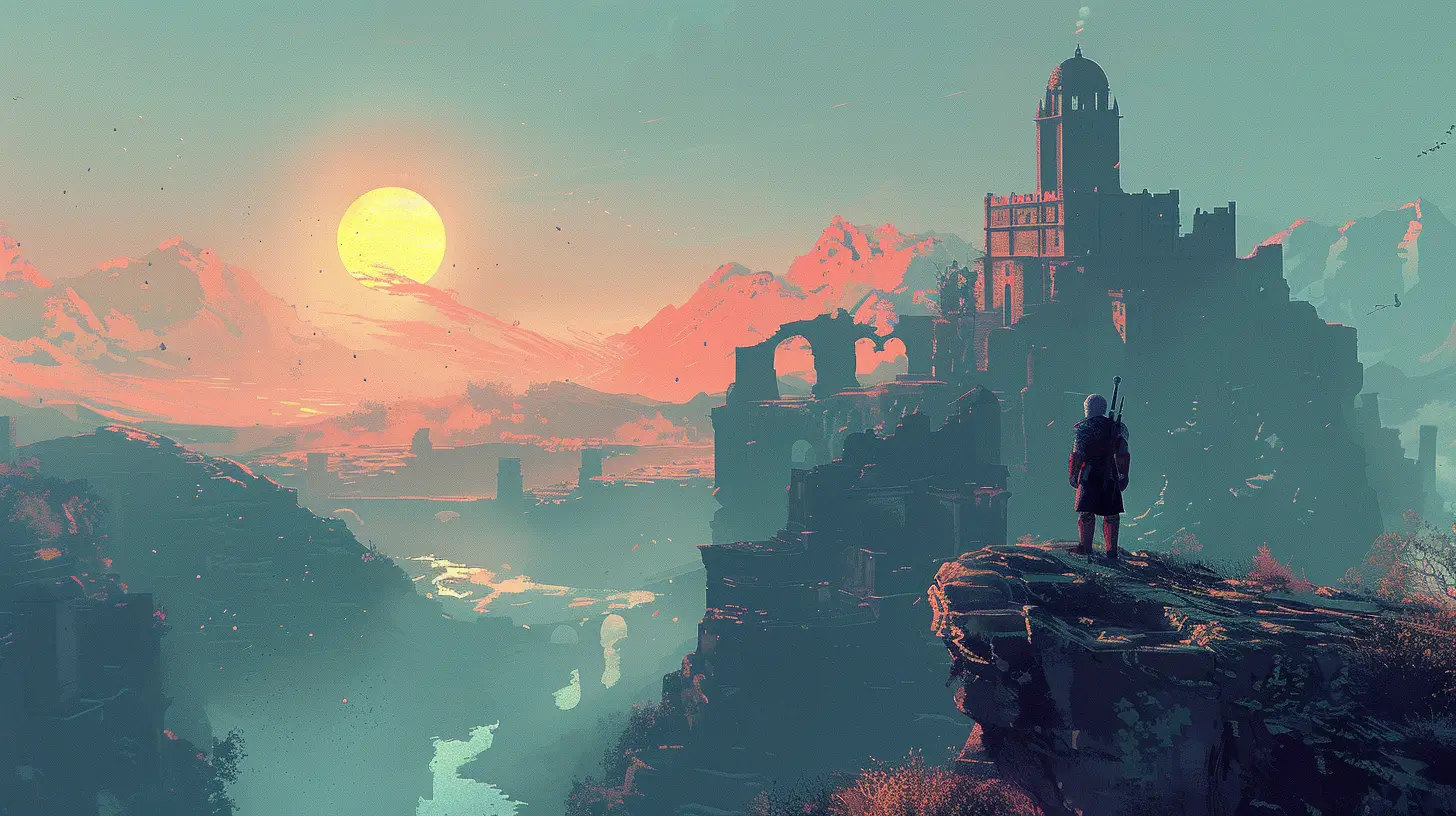Why Early Access Is the Future of Indie Game Development
21 September 2025
When you think of indie games, what comes to mind? Probably creativity, innovation, and that special spark you don’t always find in big-budget AAA titles. Indie developers are like the scrappy underdogs of the gaming world, pouring their heart and soul into projects. But let’s face it, developing and launching a game isn't cheap—or easy. That’s where Early Access swoops in like a superhero, changing the game (pun intended) for indie creators everywhere.
In this article, we’re breaking down why Early Access isn’t just a trend but a key ingredient in the future of indie game development. Whether you’re a developer, gamer, or someone who just loves keeping up with the gaming scene, buckle up—you’re about to see why Early Access is taking the indie world by storm.
What Is Early Access?
Before we dive into the "why," let’s make sure we’re all on the same page about the "what." Early Access is a model where games are made available to the public while they’re still in development. Players purchase the game, play an incomplete version, and developers use the feedback (and those sweet, sweet funds) to improve and polish the final product. It’s like baking a cake with your audience—everyone gets a taste before it’s fully frosted.Platforms like Steam, Epic Games Store, and Itch.io have championed this model, making it easier for indie devs to connect directly with their audience. It’s a win-win both for creators looking for funding and players hungry to try something new before anyone else.
The Financial Lifeline for Indie Developers
Let’s not sugarcoat it—making a game costs money. Lots of it. Indie studios don’t have the multi-million-dollar budgets or safety nets that AAA developers enjoy. Early Access helps bridge that gap.By selling an unfinished game, developers can generate revenue to keep their project alive. Think of it as a crowdfunding campaign, but instead of promises and stretch goals, you’re getting a playable product in return. Those funds can go towards hiring more team members, adding new features, or simply keeping the lights on in the studio.
For indie creators, Early Access can be the difference between shipping a game and shelving it. If you’re a gamer who’s ever played a stellar indie title, chances are that Early Access might’ve played a role in making it happen.
Directly Engaging with the Audience
Here’s the thing about indie devs: they live and breathe community. Early Access opens up a direct channel between developers and gamers in a way traditional development models rarely allow.Players provide feedback, report bugs, and suggest improvements. Imagine having a room full of people telling you exactly what they want to see in your game—it’s like having a built-in QA team and focus group all rolled into one. Sure, sometimes the feedback can be overwhelming, but most developers see it as an important part of the process.
And let’s not forget how this builds hype and loyalty. Players get emotionally invested in the game’s journey. They’ve been there from the awkward early days to the triumphant "1.0 release" celebration. They’re not just customers; they’re part of the story. What’s a better marketing tool than that?
Iterative Development: A Smarter Way to Build Games
Video games are complex beasts. It’s not like putting together IKEA furniture (though some game devs might argue it’s just as frustrating). There are moving parts, bugs to squash, mechanics to balance, and a million tiny details that need attention. Early Access allows developers to adopt an iterative development approach—basically, building and refining the game in chunks instead of dumping everything into a single release.This method lets creators adapt as they go, avoiding the dreaded “what if this flops?” scenario. If a feature doesn’t work or a mechanic feels clunky, they can tweak it based on real-time feedback. It’s like test-driving a car before committing to the final design.
Plus, this approach fosters transparency. Gamers get to witness the process, seeing how the sausage (or in this case, the game) is made. That’s a level of honesty and openness you don’t usually get with traditional publishing.
Early Access is a Marketing Powerhouse
Here’s a little secret about gaming: hype is everything. A well-built Early Access campaign doesn’t just fund development; it also builds anticipation. If you can get a dedicated community talking about your game months (or even years) before launch, you’ve already hit the first milestone of success.Streamers and content creators are a big part of this. Gamers love exclusivity—playing a game that’s still in development feels special. It draws curious eyes on Twitch and YouTube, creating free advertising for the game. Compare that to traditional marketing campaigns, which cost a fortune and still might fall flat. Early Access is like planting seeds of anticipation and letting your community water them.
The Risks and Challenges of Early Access
Of course, Early Access isn’t all sunshine and rainbows. There’s a risky side to it too, and we’d be doing indie devs a disservice if we didn’t talk about it.Let’s start with perception. Launching an unfinished game can sometimes turn players off. If the initial release is too buggy or missing key features, people might write it off forever, even after it’s improved. It’s a bit like serving a half-cooked meal at a restaurant—you don’t always get second chances to impress.
Then there’s the stress of community feedback. While player suggestions are invaluable, dealing with public scrutiny can be tough, especially for smaller teams. Developers have to decide which feedback to act on without derailing their vision for the game.
And let’s not forget the dreaded “development hell” trap. Some Early Access titles linger in development for years, leaving players frustrated. If you’ve ever followed a game for ages only to see updates trickle in slower than a snail’s pace, you know how discouraging that can be.
Why Early Access Works Best for Indie Games
You might be wondering, “Why does this model seem tailor-made for indies, but not as much for big studios?” Well, it comes down to a few key factors:1. Creative Risks: Indie developers thrive on taking risks. They can afford to experiment in ways that big studios, beholden to shareholders and publishers, often can’t. Early Access lets them see which risks pay off and which don’t.
2. Smaller Scale: Indie games don’t usually require the same level of graphical fidelity or massive worlds as AAA titles. This makes it easier to release an Early Access version that resembles the final product.
3. Community Connection: While big studios might have millions of fans, indie devs rely on smaller, more vocal communities. Early Access allows them to nurture these relationships and create a loyal fanbase.
4. Lower Financial Barriers: Unlike AAA devs, who often have deep pockets, indie creators are bootstrapping their projects. Early Access provides a sustainable way to fund their dreams.
Success Stories: Early Access Done Right
Let’s take a moment to highlight some indie games that absolutely crushed it through Early Access:- Hades: Developed by Supergiant Games, Hades started in Early Access and became a phenomenon. Feedback from players helped shape its narrative design and gameplay mechanics into the masterpiece we know today.
- Subnautica: This underwater survival game owes much of its success to its Early Access journey. Players guided its development by suggesting new features like vehicles and base-building mechanics.
- Slay the Spire: A breakout hit in the deck-building genre, Slay the Spire thrived on Early Access feedback to balance its roguelike mechanics and card combinations.
These titles aren’t just great games—they’re proof that Early Access can work like a charm when done right.
Wrapping Up: The Case for Early Access
When you step back and look at the big picture, it’s hard to ignore how transformative Early Access has been for indie game development. It’s not just a funding model or a fancy buzzword—it’s a lifeline for creators and an exciting opportunity for players. Sure, there are risks, but when handled well, the benefits far outweigh the drawbacks.For indie developers, Early Access provides funding, feedback, and a direct connection to their audience—all while giving them the freedom to create without the constraints of traditional publishing. For players, it’s a chance to be part of something special, helping shape a game’s journey from start to finish.
So, is Early Access the future of indie game development? Honestly, it already feels like the present—and it’s only getting bigger.
all images in this post were generated using AI tools
Category:
Early Access GamesAuthor:

Leandro Banks
Discussion
rate this article
1 comments
Theodora Newton
This article wonderfully highlights the potential of Early Access for indie game development. It’s heartening to see how this model fosters creativity and innovation, allowing developers to connect with their communities and refine their visions. Excited to witness the amazing journeys ahead for these talented creators!
September 27, 2025 at 4:24 AM

Leandro Banks
Thank you! I'm glad you found the article insightful. Early Access truly opens up exciting possibilities for indie developers and their communities.


